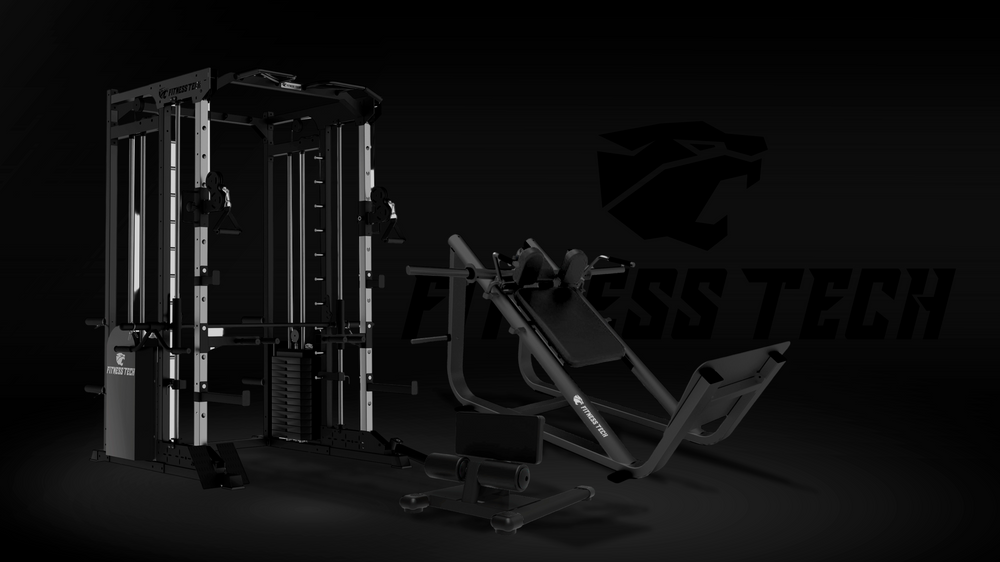What resistance band should I use to start doing pull-ups?
The Best Resistance Bands to Start Doing Pull-Ups
Achieving doing a pull-up is one of the great challenges for many who start at the gym. This exercise, besides being a classic in the fitness world, is an excellent way to develop strength and tone the upper body. For those who still cannot do pull-ups completely, resistance bands are the perfect tool to start.
In this article, we will explain which types of resistance bands are ideal for beginners, how to use them, and some additional tips to improve your progression.
Why Are Pull-Ups Difficult?
Pull-ups are an exercise that measures our relative strength, since we use our body weight to perform them. Those who find this exercise difficult usually have problems with:
- Activating the correct muscles: Often it is thought that the arms do all the work, but the key is to activate the back (especially the lats) and the core.
- Lack of upper body strength: Without a strength base in the back, shoulders, and arms, it is difficult to complete the movement.
- Incorrect posture: Keeping the shoulders back, the shoulder blades together, and the torso tight is essential for an efficient movement.
How to Choose the Right Resistance Band
Resistance bands for pull-ups come in different thicknesses and resistance levels. The general rule is that the thicker the band, the greater the assistance it will provide when pulling up. Below is a quick guide to choose:
- High resistance band: Ideal for beginners who do not yet have enough strength to complete a pull-up. These bands support a larger part of your body weight.
- Medium resistance band: Perfect for those who can already perform part of the movement on their own but still need some help.
- Low resistance band: Designed for people who are about to achieve their first unassisted pull-up.
Tip: If in doubt, it is better to start with a more resistant band and progress to bands with less resistance as you gain strength.
How to Use Resistance Bands to Do Pull-Ups
- Secure the band to the bar: Tie the resistance band securely in the center of the pull-up bar. Make sure it is well fixed to avoid accidents.
- Insert your foot or knee into the band: If you use a thick band, you can place a foot inside the loop. If you need less help, you can place your knee.
- Grip the bar correctly: Use a closed grip, making sure to wrap your thumb under the bar for greater safety.
- Perform the movement: With the assistance of the band, pull your body up until your chin passes above the bar. Lower down controlled to the starting position.
Advanced tip: If you still need more help, you can combine two bands of different resistances to get greater support.
Complementary Exercises to Improve Pull-Ups
While using resistance bands is an excellent way to progress, you can also complement your training with these exercises:
- Dumbbell or barbell rows: Strengthen the lats and help develop the strength needed for pull-ups.
- Inverted rows: Position yourself under a bar on a rack at hip height, grab it with both hands, and pull your body toward it.
- Lat pulldowns on a high pulley: Simulate the pull-up movement, focusing on the back and arms.
- Hanging from the bar: Improves grip strength and helps familiarize yourself with the starting position of pull-ups.
Tips for Beginners in Pull-Ups
- Patience and consistency: Learning to do pull-ups takes time. Don’t get frustrated if progress is slow.
- Control the movement: Always lower yourself in a controlled manner to make the most of each repetition.
- Strengthen your core: A strong core improves stability during the movement.
- Don’t skip back day: Regularly training the back muscles is key to mastering this exercise.
With the right tools and a consistent approach, achieving your first pull-ups will be an attainable goal. Resistance bands are a great ally to start, but remember that complementary work and good technique are also essential.
Get ready to conquer the bar and enjoy the benefits of this challenging exercise!






Leave a comment